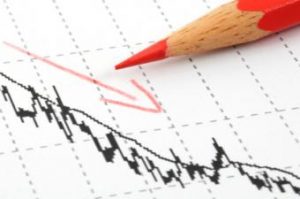 More than half of mortgage borrowers have lost income due to the COVID-19 pandemic, and close to one in five have missed a payment during the months since the pandemic hit the United States. LendingTree surveyed more than 1,000 borrowers at the end of June to determine how the pandemic is impacting their financial situation and ability to pay their mortgage loans.
More than half of mortgage borrowers have lost income due to the COVID-19 pandemic, and close to one in five have missed a payment during the months since the pandemic hit the United States. LendingTree surveyed more than 1,000 borrowers at the end of June to determine how the pandemic is impacting their financial situation and ability to pay their mortgage loans.
A total of 53% of borrowers have lost at least some income because of the pandemic, and millennials are the hardest hit. Among millennials, 61% report a loss of income, compared to 57% of Generation X and just 37% of baby boomers.
While 82% of borrowers have continued making mortgage payments uninterrupted by the pandemic, the remaining 18% have missed at least one payment. The vast majority of these borrowers have entered a forbearance agreement, but 5% of those who have missed a payment have not entered an agreement with their lender.
In total 30% of borrowers across the nation have entered a forbearance agreement with their lender, while another 12% are in the process of applying for mortgage relief.
Two percent of survey respondents report being denied for a forbearance plan.
LendingTree reported that 44% of those in forbearance plans have an annual household income of $100,000.
At the same time, 7% of borrowers with an income of less than $25,000 say they were denied mortgage relief, which is higher than any other income bracket, according to LendingTree.
Some borrowers may have been reluctant to enter forbearance because they were unsure of the terms of the relief. Among survey respondents baby boomers were the most likely to be unsure of the terms of forbearance plans. About 37% of baby boomers said they were unclear on the terms, compared to 17% of both Gen Xers and millennials.
About two-thirds of borrowers who have lost income say they would consider missing a payment on some type of debt, and of the types of debt payments they would consider missing, mortgage payments were the first choice, closely followed by credit card payments.
About 24% of those who might miss a payment said they would miss a mortgage payment, and 23% said they would miss a credit card payment.
Also, while many borrowers have entered forbearance plans on their home loans, about 32% have also deferred paying other bills, including auto loans and credit cards, according to LendingTree.
“Unfortunately, the response to the coronavirus crisis has been very poor; many layoffs that were temporary are beginning to become permanent, and the economy is likely to remain weak well into 2021,” said Tendayi Kapfidze, Chief Economist at LendingTree.

 DSNews The homepage of the servicing industry
DSNews The homepage of the servicing industry










